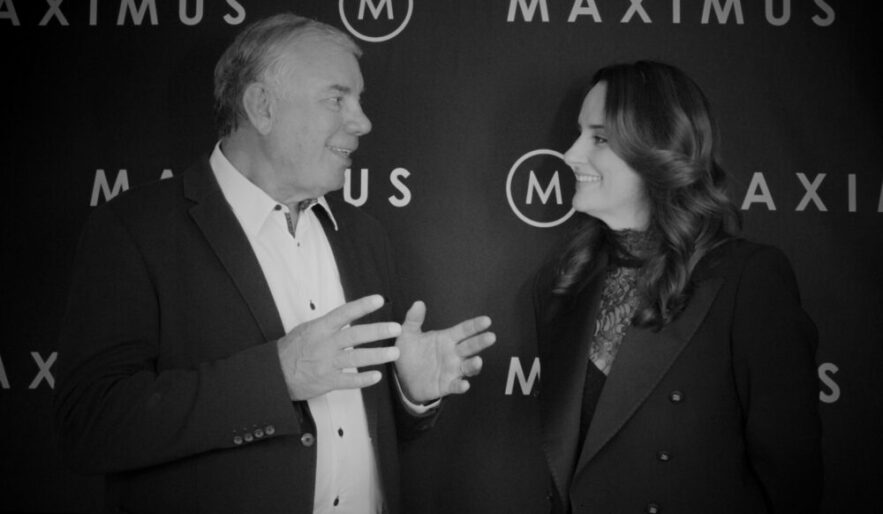The COVID-19 situation isn’t the first crisis Maximus Founder and Joint Managing Director Vanessa Gavan has faced as a business leader, and it likely won’t be her last. In fact, the original launch date for Maximus, following several months of strategic preparation with her new team, was planned for early to mid-September 2001.
“It’s important for a leader to pay attention to the cues around them,” Gavan says. “After September 11, we went away and re-built our IP and did more stargazing on our strategic work. We launched with a very clear remit, three or four months later. We knew exactly what kind of leadership work we needed to take to market and that made us very relevant in that environment. As a result, our business doubled each year for the next three years.”
If a leader’s eyes are down as they and their team batten the hatches, cues are missed and opportunities go unrecognised. When they give themselves permission to look up and take a read of what’s going on around them, it’s possible to develop an abundance mindset rather than one that is reactive and driven by fear.
The great power of an abundance mindset is its contagious nature within an organisation. Particularly with technology that allows scaling at pace, when an entire business is recognising and appreciating opportunities as others are hunkered down and preparing for the worst, the positive momentum can result in enormously increased market share in a volatile economic environment.
“The biggest things that get in the way for leaders are the limitations on their own ways of thinking about opportunities, progress and potential,” Gavan says. “It might seem too difficult, too expensive or too much to bite off. Often, we focus on the challenges rather than saying, ‘I’m going to drive this through and make it happen’. Abundance mindset is about that commitment to a bigger, brighter, transformational agenda.”
Gavan is currently hearing from some CEOs who have already switched gears. “They’re telling me they’re achieving things in two or three weeks that the organisation has been talking about for three or four years,” she says.
“How is that possible? It is partly because they had become enamoured with their own business models. They had built them and engaged with them for so long that they provided security,” observes Gavan. “But a business interruption like this, challenges those models in a fundamental way. It removes the excuses not to seek transformational change. As leaders begin to accept the new normal, if they can achieve an abundance mindset as they switch out of crisis mode, it can result in a powerful period of reinvention and reimagination.”

FINDING THE ORGANISATIONAL SHAPE OF SUCCESS
Futurist, entrepreneur and speaker Tiago Mattos is a guest professor at the Hebrew University of Jerusalem and founder of Aerolito, a laboratory that explores future scenarios. He has been in great demand since the COVID-19 virus altered the world’s perspective of the future, and he agrees that leaders can find it difficult to identify positives during such a challenge.
This, Mattos says, is less to do with leadership and more to do with being human. However, the very nature of their positions means it is more important for leaders to drag their focus away from the negatives and design a way out.
“Our brains are designed to focus on bad news instead of good news,” Mattos says. “We have a tiny part in our grey matter called amygdala… once we are faced with more information than the brain can process, our amygdala is in charge of curating what is important and what isn’t for our survival as human beings. It’s like an algorithm; it chooses what is important to us and what is not.”
The COVID-19 problem means we are faced with daily negatives, dangers and risks. This makes it difficult for us to access any good news, or to recognise opportunities. But a conscious understanding of this subconscious process can disrupt the amygdala’s protective mechanism, Mattos says.
Once an abundance mindset has been achieved, success is a matter of ensuring the organisation is in the right shape to thrive in a radically reshaped market.
“I’ve always recommended leaders to understand Charles Handy’s The Second Curve theory,” Mattos says. “Basically, he says that you have to have your main organisation – I call it the ‘mother organisation’ – being responsible for today’s income. Innovation will grow at an incremental rate here.”
“But you must have a second curve – I call it the ‘baby organisation’ – responsible for tomorrow’s income. And here you will see innovation at a disruptive pace. This is kind of intuitive for most good leaders. The problem is that you have to arrange your internal assets, including the absorption of emerging technologies, in both organisations. And [that’s where] you see leaders getting it wrong.”
Most leaders, Mattos says, are facing enormous pressure to run the mother organisation for growth and long-term sustainability. “They must make this organisation last forever,” he says. This is why they regularly fail in implementing more disruptive technologies and other assets in the mother organisation.
“In large, traditional organisations… teams will postpone adopting it as long as they can,” he says.
A common misunderstanding in the new economy is that the priorities must be long-term sustainability and growth. While these are important, Mattos says, the real priority must be reinvention.
WHERE DO LEADERS LOOK FOR CUES?
Maximus has long promoted the value of curiosity, of leaning in and listening deeply to all stakeholders.
“While you might have a very clear, long-range perspective of where the business wants to be, what’s changing minute to minute in a crisis situation is how people feel about their future, about your brand, and what they’re focusing on,” Gavan says.
“For you to be relevant in the present and in the long-term – and every business needs to be relevant – you have to be watching and reading those cues from stakeholders,” she adds. “This is something that entrepreneurs learn to do from a very early stage.”
This is absolutely a mindset choice, Gavan says. Leaders have a decision to make around whether they focus on the mass of negative news or whether they practice abundance thinking by focussing on what can be improved and on opportunities, including opportunities to be a positive member of their community.
“Businesses that lean into this and that think about themselves as being equally for purpose, for profit and for the good of people are going to be the businesses that walk out on the other side with masses of loyalty,” Gavan concludes.
“Staff, customers, clients and other stakeholders are making choices right now. They are watching and observing and making significant decisions around which businesses they want a relationship with. Organisations that do a good job of this, that make it about more than just profit, will enjoy enduring commitment from their stakeholders as they grow through the recovery effort and into their reimagined states.”
This article was conceptualised and written by the team at Maximus including Vanessa Gavan, Brent Duffy, and James Aris. Compiled by Chris Sheedy.







